THE EDUCATORS
| April 29, 2011 | Post In LEAP 8
The question of art education in China, like just about every question in China, is a complicated one, tied to the myriad issues facing a society in the throes of a massive transition. There is no easy solution, and acknowledging the obstacles is a prerequisite to solving the issues. To this end, we interviewed eight artists who teach (or taught) in art academies. Among these are Chen Danqing, whose resignation from Academy of Arts and Design Tsinghua University sparked heated debate, as well as the newly minted art professor Yang Fudong. Some are department chairs, others have built departments, or hold entire schools on their backs. They lead reform within the art education system, ever as they confront its status quo.
Their thoughts take two divergent paths leading to the same reform goal. However, whether their approach is grassroots or trickle down, their education practice goes nowhere without support of the administration, evidence that given the difficult climate of art education, an open-minded administrator is often the most effective force of reform. The views shared here come from the perspective of those already inside the academy, and do not take into account the current entrance examination system or the overarching Chinese education system. Nevertheless, our interlocutors cannot disregard these externalities. While they belong to a previous generation of graduates who entered the art schools with a singularity of purpose and against a backdrop of relatively sparse opportunities for higher education, they now teach a batch of students who have come to them for the sole purpose of getting a university diploma, and many of whom end up looking for employment far beyond the art world. At best, these educators are creating new structures that will propagate experimental artistic inquiry for generations to come; at worst, these background factors make their earnest struggles to establish new pedagogies seem like mere tinkering. (Sun Dongdong)
LÜ SHENGZHONG:
ART SHOULD FEEL GOOD

In 1982, I enrolled in advanced courses in the erstwhile Department of Serial Pictures and New Year’s Pictures of the Central Academy of Fine Arts. Later, I tested into the graduate program with a concentration in folk art. After graduating in 1987, I stayed on as an instructor. Today, I am the director of the Department of Experimental Art. For CAFA graduate students, I think the most valuable coursework is the study and collection of folk culture. Traditional culture tells us what art is. Art is more than drawing and painting; there are many other forms. Sculpture, also called installation, is found in both Western art and Chinese folk art, and there is also land art. There are art forms that have the characteristics of art but have not been labeled contemporary art. My in-depth understanding of folk art made it easy for me to comprehend contemporary art and also proved valuable as I participated in the planning of the Department of Experimental Art. If I did not have this foundation, then perhaps it would have been more difficult.
When I was an instructor in the Department of Folk Arts, I initiated two courses. One was paper-cutting, which I used as a sketching class as a way to teach students basic skills. The other course was on the origins of visual forms. Through teaching, I had discovered that we were often only showing students superficial techniques without explaining the reasons for the development of folk arts. So I initiated this course to train students in methods of observation and thought. Later, this course was also picked up by the Painting and Sculpture departments as well. Today, it’s a required course in my department, and many academies around the country now teach it too.
I went abroad for the first time in 1992. I spent three months in Germany, where I experienced a real shock. At the time, our academy was only producing painters. We only knew painting; we didn’t understand the concept of the “artist.” But art should not only look good. It should feel good. I thought our students should know this, so I was very excited to go back to China. I wanted to start my own school. I gave up on that idea because I didn’t know anything about running a business, but I have always had this desire at the back of my mind.
In 2004, I participated in the planning for the Central Academy of Fine Arts’ Department of Experimental Art, which was established after about one year of preparation. We had two primary educational goals: first, to help students become mainstream artists and artistic elites in mainstream culture; and second, to have a normal capacity to work in society, or in other words, to be able to get a job. There are sixteen required courses for undergraduates, divided into three categories: one, foundational plastic-arts technique, including drawing, color, and visual form; two, methods of working and thinking, including courses on making proposals, cultural observation, public aesthetics, and so on; and three, formal language, such as materials, video art, and so on. In addition to the aforementioned course on “origins of visual form,” I also lead the proposals course.
I never imagined that our experimental department would attain the prominence it has. During the planning stage, I submitted a prospectus titled “A Utopian Outline,” because at the time I felt that the things I had written were completely unrealistic. I never thought that this prospectus would be accepted. To a lot of outsiders, the academy is a conservative place, but on the inside, the waters are still stirring. At the very least, nobody is drowning. It is possible for people to accomplish the things they want to do. At present, there is a lot of criticism of art education. I feel that it is easy to criticize, whereas actually doing things is difficult. Put anyone in this sort of position, and they will feel that there’s no universally correct action, but at the same time, some action has to be taken.
CHEN DANQING:
I HAVE ESCAPED AND NOW AM FREE
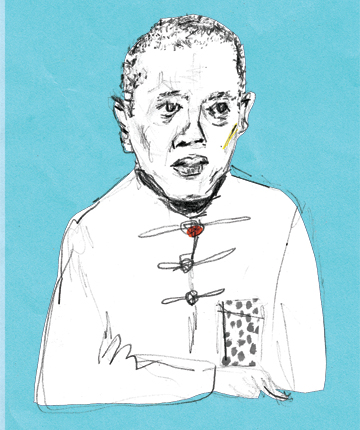
I never “chose” to become a teacher, yet I have unexpectedly served two terms. The first was in 1980 after I finished graduate school at the Central Academy of Fine Arts. In a logical step, I stayed in the Oil Painting Department and worked as a teaching assistant in the No. 1 Oil Painting Studio. At the time I didn’t really teach anything, and I left the country a year later. The second time was in 2000 at the Tsinghua University Academy of Arts and Design. People from the older generation like Yuan Yunfu wanted me to teach in the painting department, but for four consecutive years, we basically couldn’t recruit any graduate students because none of the applicants could pass the school’s English exam, so then I resigned.
I never worry about the objectives of teaching, nor do I remember any concrete curricula. I come from a background of informal training and never followed formal curricula. At Tsinghua, I was responsible for teaching students how to paint, but that’s simply arranging for a live model and a drawing studio, no different from any of the other teachers. I’m not sure what makes the Chinese art academy system unique; perhaps it’s the constant form-filling, curriculum planning, and faculty meetings. When I was at Tsinghua, the most unique feature about each incoming class was that there wasn’t anything unique at all. They were all lost and dejected, slaves to dogma.
During my first stint as a teacher, I was just a young instructor in the department, responsible for running errands, taking care of odds and ends. Once I even led students from the No. 1 Painting Studio— Yang Feiyun, Chao Ge, and others— on a month-long painting fieldtrip to Inner Mongolia. At the time, I didn’t have any thoughts on reform. The second time I took up teaching, it was for six years. At the time, graduate candidates who weren’t accepted to the program due to failing the English language exam had written countless letters of appeal, but it was utterly useless. I think in China, there is little worth discussing about the issue of art education. When considering the current state of China’s supposed education system, I already accomplished my main goal, and that was to flee as quickly as possible— luckily I was fortunate to escape.
YANG FUDONG:
A GOOD AESTHETIC CONSCIOUSNESS
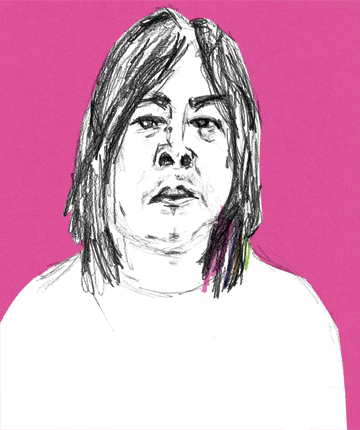
In September 2010, I returned to the newly established School of Inter Media Art at the China Academy of Art to head the “experimental image studio.” The studio focuses on two types of research: one is static images like photography and oil painting; the other is moving images, such as experimental film, animation, or three-dimensional sketching. I hope to maintain an attitude of freedom and openness at the school. When a student arrives at the studio, he develops a personal direction and style. The studio can offer the possibility of choice to let him figure out how he should go about doing it. This is in fact demanding more of the students because they must first learn to think independently, and independent thinking leads to unpredictable paths. They must also be hands-on and proactive. Furthermore, supposing that they will be making art for the rest of their lives, they need to learn how to run the marathon and persist even in times of boredom or fatigue.
Actually the education that the school offers is like soil; even though it’s a department nominally committed to “new media,” if they feel like making traditional Chinese paintings, or sculptures, then they should do that. They are free to try a variety of things to absorb all the nutrients. Absorbing nutrients is not a process of simple consumption, but rather of transforming these stimuli into an impetus for growth. So it can’t be pure imitation, students must make their own judgments. I hope that at the very least, students leave this school with a very good aesthetic consciousness, or perhaps you could say, develop a very good character. I want them to be passionate about life and live by their own method instead of trying too hard to become the artist of people’s preconceived notions. Art is not necessarily something that can be taught.
SUI JIANGUO:
MY PRINCIPLES ARE ACTUALLY QUITE CONSERVATIVE
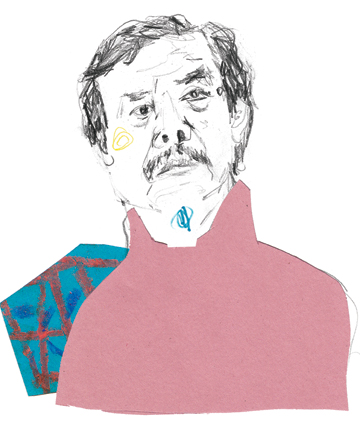
After I became head of the Department of Sculpture in 1997, I began to change its educational structure, but progress was gradual. It was not until CAFA’s move to the new campus in Wangjing in 2001 that the curriculum was completely revised. After the revisions, the main objective became providing a fundamental education for the sculpture major. The curriculum was divided into two stages. In the elementary stage, students spend 18-24 months comprehensively immersed in the language of sculpture. In this stage, they are exposed to the essentials of sculpture, from classical principles to modern innovations. Before the revisions to the curriculum, students were only required to study the classical and realist periods of sculpture; this sort of limited scope was common at art schools throughout China.
The second stage begins in the third year. In this stage, the students join a studio of their choice. The studios in the department are divided into a few different tracks, with two studios per track. Two studios basically maintain the classical and realist traditions, with one studio focusing on French styles and the other focusing on Soviet styles; there’s also a modern track, with one studio that focuses on modern sculpture materials and another that mainly emphasizes experimental and conceptual sculpture; and then the fifth studio does public art, which there’s a high demand for, and it has to be integrated into landscapes. In 2010, we added a sixth studio, which focuses on indigenous, traditional Chinese realism.
In the graduate-level curriculum, students are required to explore issues with in their concentrations. The curriculum is supplemented by study of the application of basic skills and techniques, and more complex methods and techniques are also taught. Students are trained to become artists or future art educators through a process of in-depth research on specific topics for their dissertations and their creative practice. But at present, this research is still unsatisfactory, because graduate students also teach undergraduate classes. Compared to the “breadth” of undergraduate education, the “depth” of graduate-level teaching is still lacking. It’s not different enough from the undergraduate education. In this funnel-shaped transition from undergraduate to graduate, the development from “breadth” to “depth” is still inadequate. In fact, this is related to the insufficient distinctions between levels of higher education throughout the Chinese system. It’s a problem that goes beyond art education.
I am always skeptical of trends, both international and domestic, and also skeptical of unswerving conservativism. These radical and conservative attitudes are always caught up in the motives of various interests. And of course, I am particularly skeptical of myself. With this sort of mentality, my approach is simply to look at a lot of different things, European and Asian, and choose a few relatively good options for our educational program. In serving as department head for more than a decade, the principles I have adopted are in fact relatively conservative. What I hope to achieve is a state of both anticipation and reservation.
There is still a significant lag before international trends are introduced in China. While China remains relatively isolated, I believe the best approach is to give students a lot of choices, and keep the doors open for future development. We must maintain reserves of human capital, so that different threads, including realist sculpture, can be continued. Once the opportunities are there, China’s stores of talent will be released. Today, after more than a decade of experience in education, I can actually see that each approach and each track is beginning to produce capable people. The team of instructors in the sculpture department has grown to become one of the strongest in Asia. I believe that my “conservative” approach has in fact been effective.
QIU ZHIJIE:
I DON’T BELIEVE IN THE INDIVIDUAL
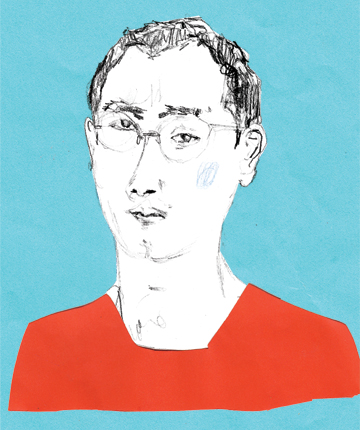
It wasn’t until 2003 that I returned to my alma mater, China Academy of Art, to teach courses in the “mixed art” and new media departments. In 2010, these two departments, along with a research center on exhibition culture, were combined to form the School of Inter Media Art, focusing on contemporary art. The current Department of Mixed Art has five studios. Structurally, our five studios are responsible for creative production. There are another eight laboratories to aid students in their understanding of technical issues. Our curriculum takes two forms: one emphasizes concept and ideology, for instance, going to the countryside for sociological fieldwork and cultural studies, including discussions about what constitutes “museum art” versus “non-museum art,” daily life, public space, and more; the other curriculum is more media-based, involving photography, video, set design, and even painting.
Because of my personal educational philosophy, I place a much greater emphasis on conducting sociological fieldwork in the countryside. A large-scale sociological study requires a sample pool that is big enough. This can be very time consuming for the students and often conflicts with their other studies. Sociological fieldwork emphasizes teamwork because it is a group project, and this too conflicts with many standard practices in contemporary art. For example, I don’t believe in the individual. Artists nowadays see themselves as private enterprises when they in fact operate within a strictly confined system. An artist believes he is free, but there is always some gallery or curator he must heed to so actually, he is not free at all. We’re actually the freest when we are in school because there’s the opportunity to consider big topics at a very basic level. So I hope students can think about whether art by the likes of Beuys, Duchamp, and others is valid, as opposed to simply falling under the influence of popular perception. However, it is difficult to engage this way of thinking because society is filled with seductions.
HUANG XIAOPENG:
PEARL RIVER CONCEPTUALISM
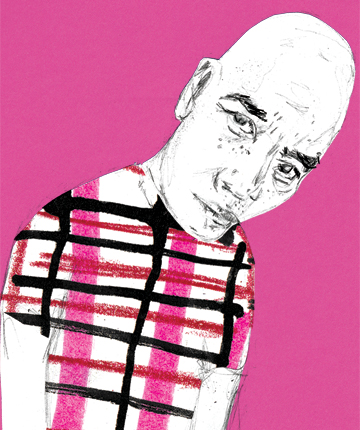
In 2003, I returned to the Oil Painting Department of Guangdong Academy of Fine Arts and, with the support of department chair Wang Weijia, established the Number Five Studio in 2005. The first order of curricular business was to remove the model-painting class. Of course, modifications to the curriculum could only be based on the existing framework of the department, like developing a sketch (sumiao) into a draft (caotu), experimenting with colors and materials, while also keeping the production course running. In a traditional school, the courses on sketching, color, and “creation” are taught separately. We tried our best to maintain continuity when teaching these skills. For example, we hope students can apply elements from the sketching course to the material exper imentation course, and then apply elements from both in their final projects. It’s been a few years and I am constantly trying different approaches to the curriculum. Each year, we invite Chinese and foreign artists to deliver lectures or workshops.
The Guangdong Academy of Fine Arts is located in the heart of the Pearl River Delta, one of China’s, if not the world’s, largest industrial manufacturing centers. The drastic changes and increasing complexity of its economy, culture, society, and politics baffle traditional cursory understandings. This dramatic shift has been a source of creative force with limitless possibilities even as it has presented universities with a broader set of challenges and wider range for experimentation. Our curriculum emphasizes experimentation as well as the necessity of rational thought. While the outcome of cultivating insight and an understanding of visual language is largely dependent upon a student’s inherent potential, it can also benefit from discussions between teachers and students. We believe the production of a new art language is not unfounded; it involves a context and awareness of Chinese and foreign intellectual and art history.
ZHANG PEILI:
LET CREATIVITY DRIVE EDUCATION
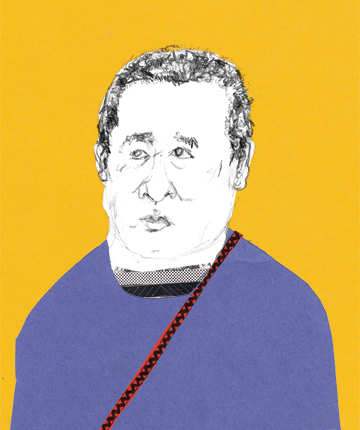
I am currently director of the “Studio of Specific Media” at the China Academy of Art ’s School of Inter Media Art, where I am responsible for the education of graduate students and the instruction of undergraduate upperclassmen. Before the establishment of this new institute, I was chair of the Department of New Media Art. Of the students that graduated from that department, some would do things tangentially related to the major, some would go work at banks, and some would go become government employees. I believe that this is a waste of educational resources. We always had some students who came to us not by choice— people whose grades weren’t good enough for other universities and who thought they could learn software here, when that’s actually very little of what we do. You talk with them about contemporary art, but many of them have no way to get into it. It makes it hard for both the students and the instructors. And those students who really want to learn and have some ability are in fact left behind by the current educational system.
In art education, we try to put creativity first. The motto is: let creativity drive education. I’ve learned this from my own experiences and from visits to schools in the West and in other Asian countries. All of our courses require students to think about making art. It is not homework. Homework is practice, something that can be done mindlessly in order to grasp certain techniques. But artwork is different: works of art require expression. I repeatedly remind students: you must be clear about what you want to say. Only once you have answered this question can you move on to the second question of how to say it. We are not like traditional artists; we do not have to first master technique in order to improve our capacity for artistic expression. Rather, we try do both, side-by-side: one track is understanding technique, and the other track is the approach and recognition of language. So in some of our courses, we try to set the technical threshold as low as possible, almost like going through the motions. I have always been skeptical of the view that one must master technique before one can develop one’s own language, because I think that technique can stifle imagination and creativity, stifle idiosyncrasy. Each individual has different characteristics, and the techniques they need are also different.
Some of our courses do indeed have relatively high technical content, including networks, programming, and interactivity. And some of the courses are relatively non-technical, for example, body language— that’s taught by Wen Hui— and there’s also experimental theater, machine installation, and so on. We lower the technical threshold, but some skill is still necessary, such as sound, digital photography, video, networks, basic programming; these are required courses that second-year students must pass before entering the department. After that, the third- and fourth-year students are mixed together in elective courses. For example, there are now sixty students all together, so with fifteen students per course, we do four courses per term, with no repetitions, everything carried out in parallel, and the students can choose their own courses. These “electives” are a very important effort for us. A big part of our courses is having first-rate artists come and do workshops. Students may have seen these artists’ work in magazines and online, but the impact of having face-to-face contact and exchange with them is great. Students have to face society sooner or later, so a lot of our standards and concepts cannot be excessively isolated and academic. This kind of exposure to non-academic creativity provides a complement to their academic education. These courses have a particularly big impact on students who continue to make art after graduation. We also have a lot of theory courses, in fields such as Chinese studies, which I planned, as well as Western contemporary art, Western film appreciation, history of video and history of photography. These theory courses also provide them with a booklist
PAN GONGKAI:
THE BUCK STOPS WITH DADDY
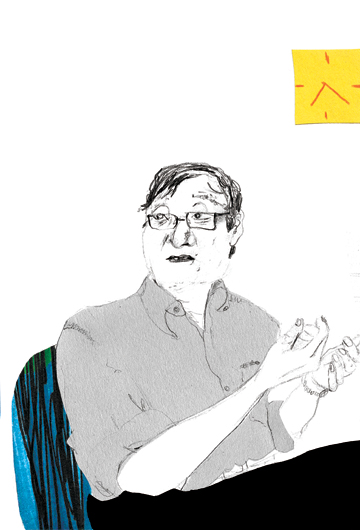
In 2001, when I became president of the Central Academy of Fine Arts, there were only seven departments and nine majors, and around 600 students. Now, there are seven branch institutes, more than thirty majors, and more than 5000 students. The CAFA of the 1980s and 1990s was focused on developing the fine arts: traditional Chinese painting, oil painting, printmaking and sculpture. At the end of the 1990s, some design majors were added. But after this past decade, we now have every major that exists at mainstream art schools in Europe and the United States. In the 90s, we were doing ten to twenty percent of what the West was doing, but now, it’s ninety percent.
Today, CAFA has the most complete curricular design possible. For example, we were the first to establish an architecture school. In Europe and the United States, one or two centuries ago, art and architecture were one and the same. During China’s Republican Period (1911-1949), art and architecture were combined at CAFA, so now, we are simply returning to this tradition. CAFA was also the first art institute to establish an automotive design department. To bring professors to teach in this department, I went to Japan for a teaching exchange. China has become the world’s largest manufacturer of automobiles, so we must cultivate our own designers. There are also some new majors, including the Cultural Heritage Center and the Department Arts Administration, which have been first-rate programs right from the beginning.
At present, sixty percent of CAFA graduates are in design. This is the most important difference between now and ten years ago. In the 1950s and 1960s, people’s conception of fine arts only included painting. This concept changed in the West following the World War II, when people began to think of art more broadly, and now all of their art schools have design majors. In New York, eighty percent of art school graduates are designers, and only ten to twenty percent are doing visual art. In market economies with extremely diverse products, the importance of design is evermore apparent; this is a fact, not a trend.
CAFA is certainly an institution that cultivates elite graduates, but elite education is extremely complicated. Making the school smaller does not necessarily make it elite. True interaction between teachers and pupils is inevitably rare; there is nothing the school can do about that. Having big classes does not necessarily mean that you cannot produce great masters. We hope to produce great masters, but we have no way of formulating a curriculum that specializes in cultivating great masters. The school targets the average student; it cannot pander to the lowest common denominator, nor can it cater to the highest. We do our best to choose good students, but that does not mean that just by canceling the English language exam we can make sure all our students are gifted artists. Each exam is necessary for certain situations.
Educational reform is connected to the greater environment. It’s not like you can do whatever you want. As president, you have to overcome adversity and take responsibility for any reforms. All eyes are on you. I became an engine— I had to come up with my own plan. You can’t discuss it too much, and you can’t tell everybody about your problems. Everyone complains that we’re enrolling too many students, that it was much better when everyone was a big family, like four or five generations under one roof, back when all the students knew all of the instructors, and the atmosphere was so warm. But society must move forward. You cannot always yearn for the past. The programs have to keep pace internationally, enrollment has to expand, and housing must be built, one step at a time. There’s no other way. Some people say, what higher education lacks is not buildings, but great masters. But if you don’t have buildings, if everything happens in huts, then all your great masters are going to go somewhere else. And the buck stops with the head of the household.

